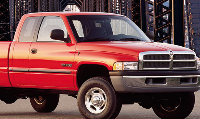what pulley to get im confused
#1
http://www.hughesengines.com/Index/p...el1=UHVsbGV5cw==
i dont know wut pulley to get is it the underdrive crankshaft pulley alt pulley or both or just the pulley crankshaft... some help please?
i dont know wut pulley to get is it the underdrive crankshaft pulley alt pulley or both or just the pulley crankshaft... some help please?
#3
i found this......read it before making the descision to buy them....kinda makes me second guess if id like to get a set
Definition
An Underdrive pulley refers to an aftermarket crankshaft or accessory pulley (such as an alternator pulley) that is designed to drive a vehicle's accessories at a slower rate than stock. Underdrive in general means the input rate of rotation in a system is greater than the output rate of rotation. However, an underdrive pulley is considered to be an accessory pulley that is larger than the stock pulley, or a crankshaft pulley that is smaller than the stock crankshaft pulley, even though the accessory may not necessarily be underdriven with respect to the crankshaft pulley.
Typical Usage Scenario
Underdrive pulleys usually are marketed as a performance enhancing item that increases the torque and horsepower output of an engine by reducing parasitic drag caused by belt-driven accessories, but more importantly by reducing the moment of inertia. Horsepower gains from underdrive pulleys alone are possible. Independent dyno tests have shown up to 15hp increase at the wheels after installing an underdrive pulley (see references). [1] [2]
Usage Concerns
Poorly designed cheap pulleys or copies and knock-offs of major brands can have severe side effects because of too much underdrive of the alternator, power steering, and/or air conditioning units, which are not spinning fast enough. These lead to dips in alternator voltage, power assist, and air conditioning effectiveness that may be noticeable, especially at idle. The headlights may dim when coming to a stop, or the stereo may lower in volume, for instance. Too much underdrive for a race car is not much of a concern, but for a daily driven vehicle it can be a major annoyance.
Changing the original crankshaft pulley can have negative effects if the replacement pulley is not manufactured properly. A crankshaft or accessory pulley that is not machined or balanced properly can cause severe damage. For most American V8s a harmonic damper is necessary to absorb crankshaft vibrations. Early to mid-year V8's kept the pulley and damper as separate components. Most late model V8s now integrate the damper and the pulley into one part. For small displacement engines (4.0L and under) the original crankshaft pulley only serves to quiet noise vibration and harshness (NVH) you hear in the occupant compartment. Although it may look like a damper on V8s engines it serves no protection function to the engine. It is the same as the baffles and resonators found in the intakes and exhausts systems of most cars today that serve to make the engine as quiet as feasibly possible. The first things most enthusiasts do is install high flow intakes and exhausts; the quieting function is eliminated.
Definition
An Underdrive pulley refers to an aftermarket crankshaft or accessory pulley (such as an alternator pulley) that is designed to drive a vehicle's accessories at a slower rate than stock. Underdrive in general means the input rate of rotation in a system is greater than the output rate of rotation. However, an underdrive pulley is considered to be an accessory pulley that is larger than the stock pulley, or a crankshaft pulley that is smaller than the stock crankshaft pulley, even though the accessory may not necessarily be underdriven with respect to the crankshaft pulley.
Typical Usage Scenario
Underdrive pulleys usually are marketed as a performance enhancing item that increases the torque and horsepower output of an engine by reducing parasitic drag caused by belt-driven accessories, but more importantly by reducing the moment of inertia. Horsepower gains from underdrive pulleys alone are possible. Independent dyno tests have shown up to 15hp increase at the wheels after installing an underdrive pulley (see references). [1] [2]
Usage Concerns
Poorly designed cheap pulleys or copies and knock-offs of major brands can have severe side effects because of too much underdrive of the alternator, power steering, and/or air conditioning units, which are not spinning fast enough. These lead to dips in alternator voltage, power assist, and air conditioning effectiveness that may be noticeable, especially at idle. The headlights may dim when coming to a stop, or the stereo may lower in volume, for instance. Too much underdrive for a race car is not much of a concern, but for a daily driven vehicle it can be a major annoyance.
Changing the original crankshaft pulley can have negative effects if the replacement pulley is not manufactured properly. A crankshaft or accessory pulley that is not machined or balanced properly can cause severe damage. For most American V8s a harmonic damper is necessary to absorb crankshaft vibrations. Early to mid-year V8's kept the pulley and damper as separate components. Most late model V8s now integrate the damper and the pulley into one part. For small displacement engines (4.0L and under) the original crankshaft pulley only serves to quiet noise vibration and harshness (NVH) you hear in the occupant compartment. Although it may look like a damper on V8s engines it serves no protection function to the engine. It is the same as the baffles and resonators found in the intakes and exhausts systems of most cars today that serve to make the engine as quiet as feasibly possible. The first things most enthusiasts do is install high flow intakes and exhausts; the quieting function is eliminated.
#7
Trending Topics
#9
#10



